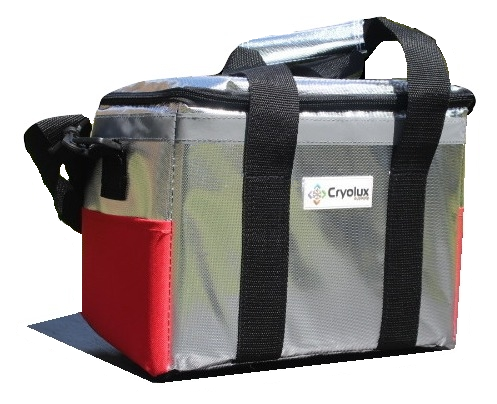Welcome to Coldpacks.com.au
Whether you have a sports injury, work outside in the heat or need to keep yourself, your spouse, your employees or your food cool we can offer you a cooling solution with these high-quality cold wraps. See our full range of Products for reusable and disposable ice packs for cold chain shipping and transport.
About Cryotherapy
Cryotherapy or Cold Compression therapy is a proven method to aid in mending injuries and speeding healing – particularly post-operative.
Any soft-tissue trauma caused by injury or surgery causes an inflammatory response within the body.
Blood vessels that have been traumatized, hemorrhage, and at the same time, cells release enzymes and proteins which activate pain receptors and alter the permeability of blood vessel walls attracting immune chemicals.
This results in a rush of fluids accumulating in the localized area thus create swelling. This excess fluid separates healthy cells in the vicinity from their oxygen resulting in secondary tissue damage ie “hypoxic injury” which again, causes even more cell destruction and edema (swelling) than the original trauma did.
Cryotherapy or cold compression therapy using cold packs or ice wraps will drastically decrease tissue loss from hypoxic injury by reducing the metabolic activity of the still-healthy cells. By requiring less oxygen, the volume of fluid is reduced and edema is lessened which reduces pain.
You can be assured of quality when you purchase your sports ice wraps – plus no delivery charges for Australia.
Coldpacks Refrigerant Packaging Advice
The maintenance of temperature ranges for specified time periods when transporting temperature-sensitive products using Cold packs cooling products.
Refrigerant packaging is always required for temperature control for the reduction of bacterial growth. This helps to maintain freshness and extend shelf life of fresh food as well as pharmaceutical products such as blood and blood serums. All products have critical temperature ranges and we at Coldpacks can provide you with high quality cooling product solutions.
Studies and industry experience demonstrate that temperature is the most critical factor affecting the quality of fresh food. Temperature controls the growth of bacteria which cause spoilage, the lower the temperature, the slower the rate of growth of these bacteria.
The Physics of COLD
HEAT GOES TO COLD, HEAT RISES, COLD FALLS, HEAT RADIATES, COLD DOES NOT
The maintenance of near-freezing temperatures over the longest period of time is the primary concern in delivering perishables of optimum quality. Once a product has been pre-chilled to near freezing the challenge is to prevent heat from entering the container and thereby re-entering the product. Coldpacks ice blankets are ideal in slowing and preventing this.
Heat can be transferred by three primary mechanisms
RADIATION is transmitted as electromagnetic waves which cause heating as they are absorbed. The heat from a campfire or sunlight is primarily radiant energy which is absorbed as heat. A reflective surface has the ability to reflect radiant energy. It follows that a dark surface will absorb more radiant energy than will a light surface. Foil placed as a liner inside a container (as our Coolerbag delivery bags and containers do) will prevent radiant energy from entering the container but will allow the cardboard, Styrofoam etc to absorb the radiant energy and convert it into conducted heat which will then pass through the foil barrier into the product. Foil should be placed as close to the outside of the container as possible as ours is.
CONVECTION heat transfer is caused by air movement across the surface of a material. Warmer circulating air passing across a cooled object will heat the object faster than if the air was motionless. This is true both inside and outside of a container. Containers should be shrouded or stored in an area of minimum air movement. Particular attention should be directed towards packaging due to the potential of convection currents occurring within the container. Air space and extreme temperature differential should be avoided.
CONDUCTION heat transfer is governed by the density and thickness of the packaging material. All materials conduct heat at different rates. This rate of conduction is referred to as the K value for a given material.

If a shipping container, eg our coolerbag delivery bags, is silvered to reflect the heat waves and if internal voids (air spaces) are minimised to prevent convection heat transfer, then the primary reason for heat gain during shipping will be through conduction.
HEAT GOES TO COLD – all sources of heat will attempt to warm product whether inside or outside of the container. The insulating characteristics of the packaging will control external heat sources. DO NOT add filler material that has not been pre-chilled as it will act as an internal heat source and create premature warming.
HEAT RISES, COLD FALLS and seeks the lowest level in the container. Proper selection and placement of the refrigerant product is essential to maximise heat absorbtion. Coldpacks CRYOPAK® FLEXIBLE ICE BLANKETS™ is a coolant ‘blanket’ which provides a uniform distribution of cold throughout the product. Put as much cold in the container as you can when packing. The more heat that is excluded from the inside of the container, the longer the shipment will stay cold. Everything going into the container should be pre-chilled. This does not mean you need more refrigerant….it means you need to ensure that everything, including the container, is as cold as possible.
